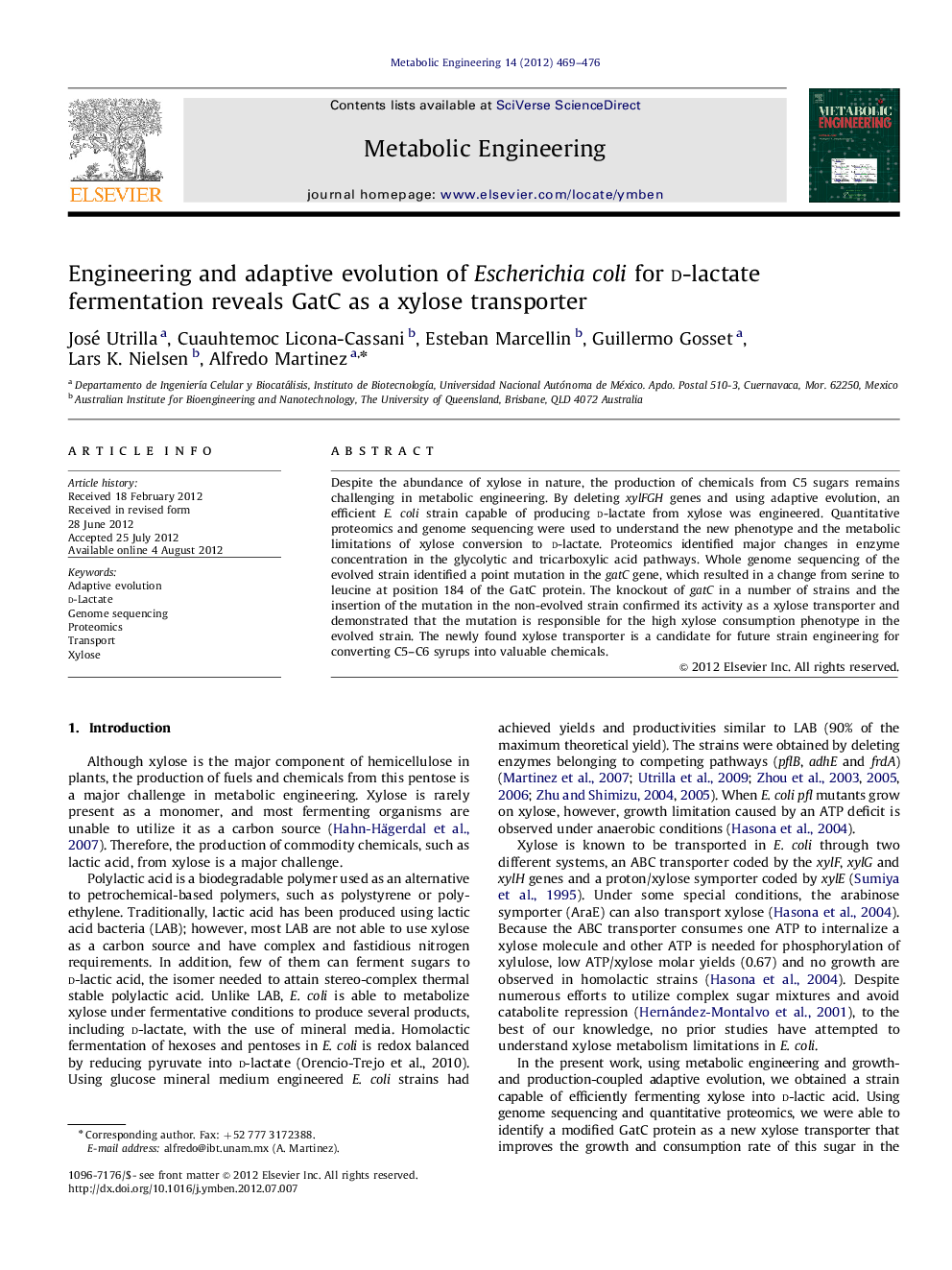| Article ID | Journal | Published Year | Pages | File Type |
|---|---|---|---|---|
| 31560 | Metabolic Engineering | 2012 | 8 Pages |
Despite the abundance of xylose in nature, the production of chemicals from C5 sugars remains challenging in metabolic engineering. By deleting xylFGH genes and using adaptive evolution, an efficient E. coli strain capable of producing d-lactate from xylose was engineered. Quantitative proteomics and genome sequencing were used to understand the new phenotype and the metabolic limitations of xylose conversion to d-lactate. Proteomics identified major changes in enzyme concentration in the glycolytic and tricarboxylic acid pathways. Whole genome sequencing of the evolved strain identified a point mutation in the gatC gene, which resulted in a change from serine to leucine at position 184 of the GatC protein. The knockout of gatC in a number of strains and the insertion of the mutation in the non-evolved strain confirmed its activity as a xylose transporter and demonstrated that the mutation is responsible for the high xylose consumption phenotype in the evolved strain. The newly found xylose transporter is a candidate for future strain engineering for converting C5–C6 syrups into valuable chemicals.
► E. coli was engineered and evolved for efficient xylose fermentation to d-lactate. ► Quantitative proteomics and genome sequencing were used to study new phenotype. ► The evolved strain shows higher levels of glycolytic enzymes and xylose consumption. ► The involvement of GatC in xylose transport was found.
